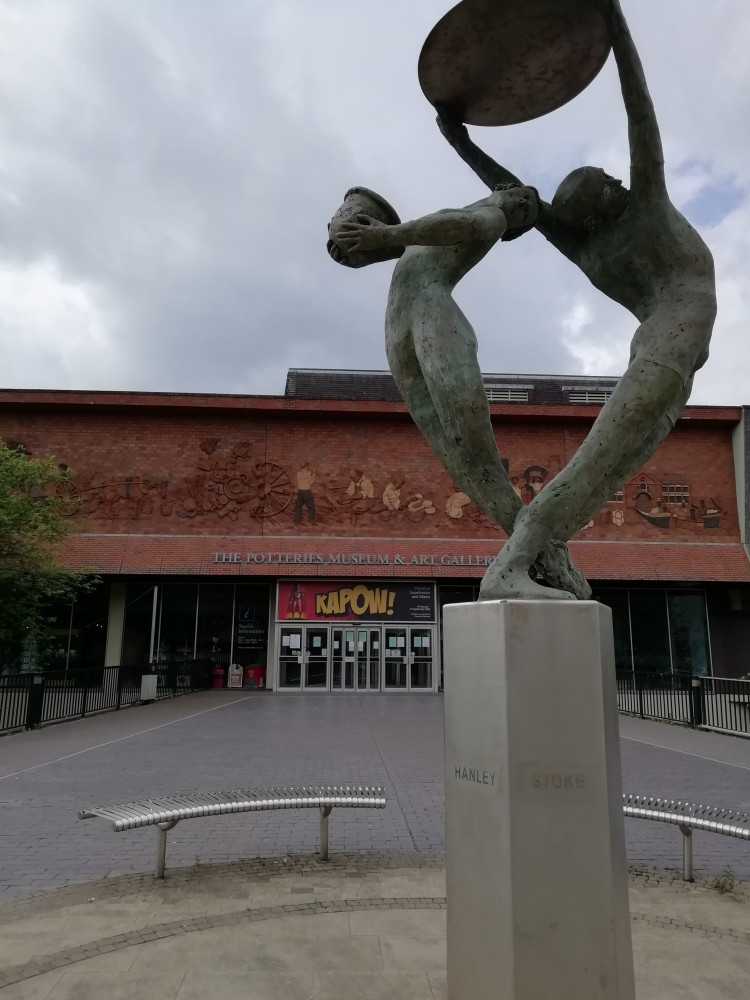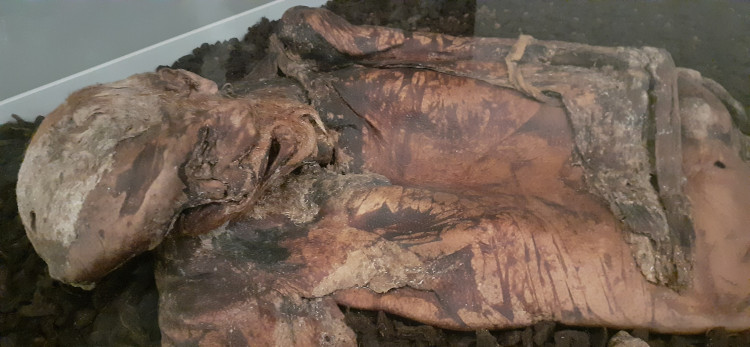OPINION: New Thinking Needed for the Potteries Museum & Art Gallery
By Kevin Raftery 7th Feb 2023
By Kevin Raftery 7th Feb 2023

Local people are proud of Reginald Joseph Mitchell and the Spitfire. Born on Congleton Road, Butt Lane, Kidsgrove, in the borough of Newcastle-under-Lyme and educated at Hanley High, Reginald Mitchell (1895–1937) is perhaps North Staffordshire's most famous son.
Although the first prototype Spitfire, serial K5054, flew for the first time on the 5th March 1936 at Eastleigh in Hampshire, sadly Mitchell did not live long enough to witness his famous aircraft take the central role in the Battle of Britain (began July 10th 1940 and lasted three and a half months). He died in 1937 aged just forty-two.
I have been a regular visitor to the Potteries Museum & Art Gallery for some fifty years, and in the 1970s, the same aircraft used to be exhibited in a glass case opposite the museum. There was also a live bee's nest on the museums roof too.
Our museum was something to be proud of.
Because of my fifty-year relationship with this institution, I can safely say that it is now at a crossroads and at a loss for new inspiration, energy and ideas. To put it blunt, we need something new to enliven the regional narrative – the Potteries Museum & Art Gallery needs to reinvent itself.

It goes without saying that the statue of Reginald Mitchell on the Broad Street side of the museum is often missed by visitors and needs to marry-up with the Spitfire, located on the Bethesda Street side (most odd that the Spitfires' nose is facing backwards towards Shelton, instead of facing forwards toward the main footfall on Bethesda Street). The Spitfire/statue of Mitchell then needs to be illuminated with some sort of WW2 spotlight (perhaps with colours from the aircraft ensign) to grab the attention of the passing public.
The Potteries Museum & Art Gallery is also in desperate need of a new modern attraction like an interactive semi-virtual ghost train ride (as seen at the Viking Museum in Stockholm and the Titanic Museum in Belfast). This way, visitors can interrelate with our dark and intriguing industrial heritage (ideas can be sourced when visiting the displays 'Flushed with Pride' and the 'Doctors House' at the Gladstone Pottery Museum in Longton).
Besides, the Saxon Hoard, found near Lichfield, South Staffordshire and presented at the Potteries Museum has become tired and overworked.
An imaginative idea is to showcase Ancient Britain and our local Celtic culture. In Leek, North Staffordshire on December 11th 2016, beautiful Iron Age treasure, which is some 2,500 years-old (the oldest ever found in Britain) was discovered by two metal detecting enthusiasts. This excavation needs expanding upon. It would be enlightening to feature a dynamic exhibition at the Potteries Museum that dispels the myth that the Celts were Barbarians. This could be exacted by presenting evidence that our ancient ancestors and common progenitor were not just scholars/philosophers, excellent astrologers, natural (although circumstantial) environmentalists and skilled craftsmen/women (see the solid sheet-gold cape found in Mold, Flintshire, dating from 1900–1600 BC).
We could even link our local Ancient British tribe the Cornovii (whose territory included North Staffordshire, Cheshire, Shropshire, North Herefordshire and eastern parts of Flintshire, Powys and Wrexham) with the Iceni and Boudica (Norfolk) to heighten interest. Additionally, the Lindow man (2 BC – AD119) was found in the peat bogs of our ancient catchment area (Wilmslow, Cheshire) and is displayed at the British Museum in London. The Lindow Man is often loaned out to other museums.

In my experience over the years, when visiting countless institutions of culture (including the excellent Colchester Castle Museum) I have only seen one semi-large-scale Celtic depiction with any depth and meaning. Although Gallery 50 at the British Museum covers the Iron Age, it presents European artefacts as well as British. There are no re-enactments either. We could be the first primary exhibitor. There is a rapidly growing interest in everything Celtic world-wide, which would in turn elevate Stoke-on-Trent to the 'must visit' echelons and boost our local economy.
Moreover, visitors could conclude the tour of our new and reimagined museum in the Contemporary Studio. It has to be said that today's modern man (us) will be known to posterity in thousands of years hence as an ancient civilisation. Perhaps in this futuristic society, visitors to establishments like the Potteries Museum & Art Gallery will hold their hands over their mouths in disbelief on witnessing the 2023 Cost of Living Crisis Exhibition, portraying how working families survived without adequate food, shelter and warmth (as described in Maslow's Hierarchy of Needs (1943).
READ MORE: Library Lover's Month: What's on at Stoke libraries this month
Free from clickbait, pop-up ads and unwanted surveys, Stoke Nub News is a quality online newspaper for our city.
Please consider following Stoke Nub News on Facebook or Twitter.
CHECK OUT OUR FREE NEWSLETTER!
5 TOP STORIES EVERY FRIDAY!
Click here to sign up: stoke newsletter
Share:

























